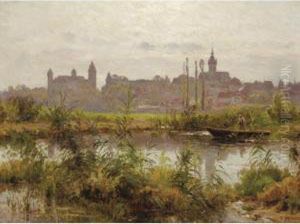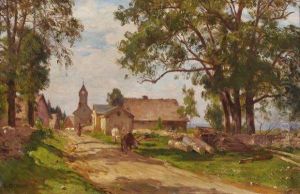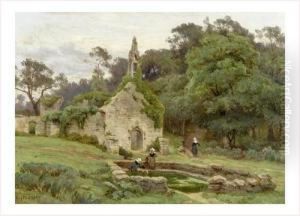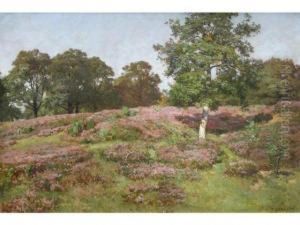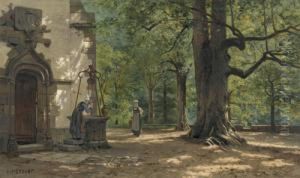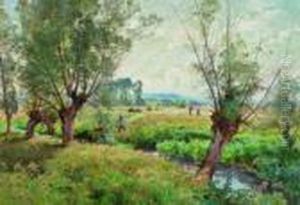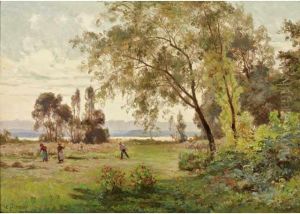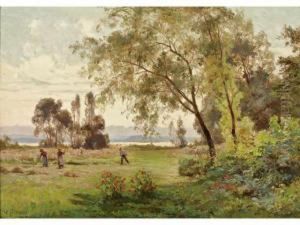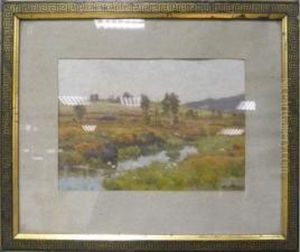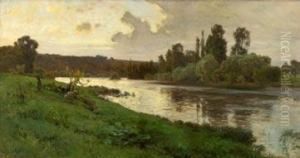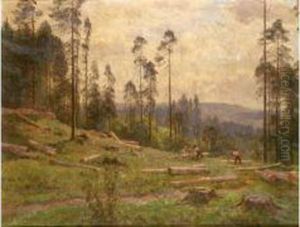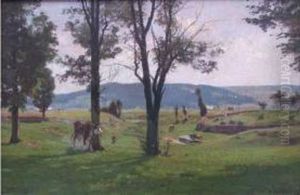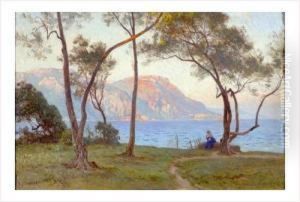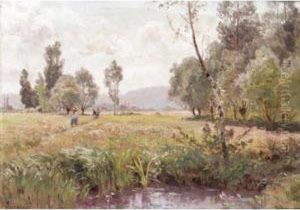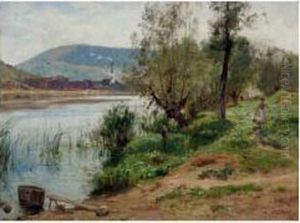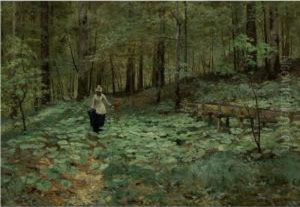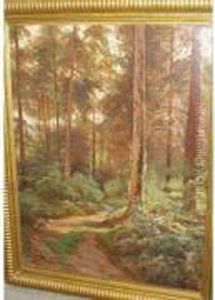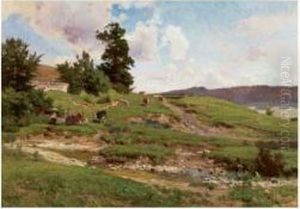Marie-Victor Emile Isenbart Paintings
Emile Isenbart was a French landscape painter, watercolorist, and engraver, best known for his naturalistic depictions of rural French landscapes and river scenes. Born in Besançon, France, in 1846, Isenbart's artistic talents were evident from a young age. He was initially trained by his father, who was also an artist, before continuing his education at the École des Beaux-Arts in Paris.
Isenbart's work was heavily influenced by the Barbizon school, a mid-19th-century French art movement that emphasized realistic and unidealized portrayals of nature. He was particularly inspired by the works of artists such as Jean-Baptiste-Camille Corot and Charles-François Daubigny. Isenbart's own style, while rooted in realism, also incorporated elements of impressionism, especially in his use of light and color.
Throughout his career, Isenbart exhibited his work at various salons and galleries. He gained recognition for his ability to capture the essence of the French countryside, often focusing on the Franche-Comté region where he was born. His paintings typically featured serene vistas, with meticulous attention to the subtle shifts in light and atmosphere.
In addition to painting, Isenbart was also skilled in the art of engraving. He produced a number of engravings that reflected his passion for the natural landscape, and these works were well-received by the public and critics alike.
Emile Isenbart's contributions to French landscape painting were significant, and his works continue to be appreciated for their beauty and historical value. He passed away in 1921, leaving behind a legacy of art that continues to inspire and captivate audiences. His paintings can be found in various museums and private collections, serving as a testament to his talent and his love for the French countryside.
